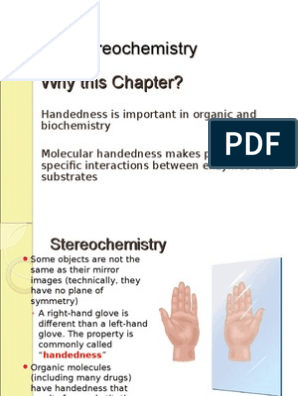0% found this document useful (0 votes)
18 views36 pagesPOC-III-Unit I-3
The document discusses stereoisomerism, focusing on the spatial arrangements of atoms in molecules, particularly optical and geometrical isomerism. It explains concepts such as optical activity, tetrahedral carbon atoms, conformational analysis, and the nomenclature of stereochemistry. Additionally, it covers racemization, resolution of racemic mixtures, Walden inversion, and asymmetric synthesis in the context of pharmaceutical organic chemistry.
Uploaded by
immenualprakashCopyright
© © All Rights Reserved
We take content rights seriously. If you suspect this is your content, claim it here.
Available Formats
Download as PPTX, PDF, TXT or read online on Scribd
0% found this document useful (0 votes)
18 views36 pagesPOC-III-Unit I-3
The document discusses stereoisomerism, focusing on the spatial arrangements of atoms in molecules, particularly optical and geometrical isomerism. It explains concepts such as optical activity, tetrahedral carbon atoms, conformational analysis, and the nomenclature of stereochemistry. Additionally, it covers racemization, resolution of racemic mixtures, Walden inversion, and asymmetric synthesis in the context of pharmaceutical organic chemistry.
Uploaded by
immenualprakashCopyright
© © All Rights Reserved
We take content rights seriously. If you suspect this is your content, claim it here.
Available Formats
Download as PPTX, PDF, TXT or read online on Scribd
/ 36























































































